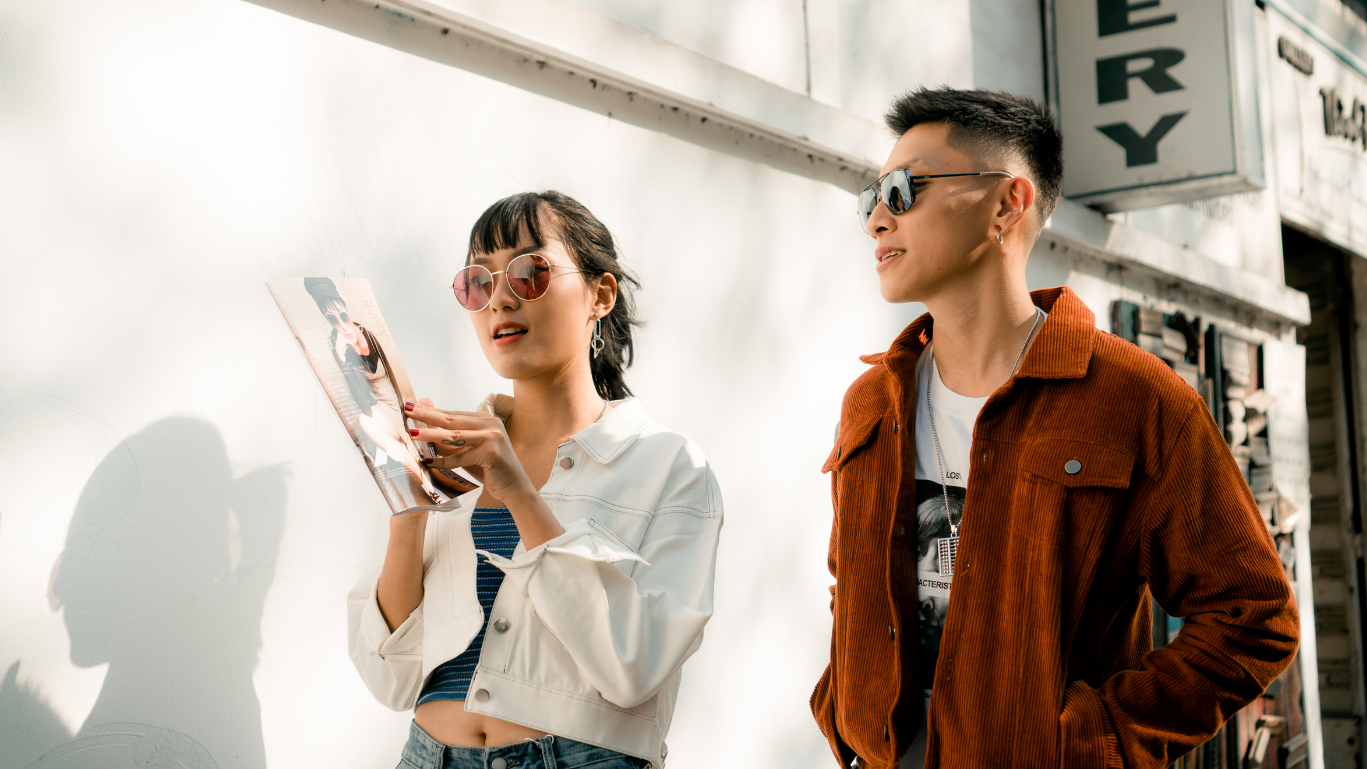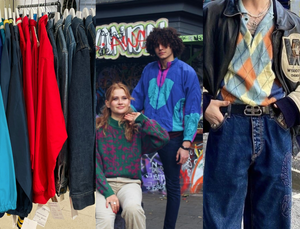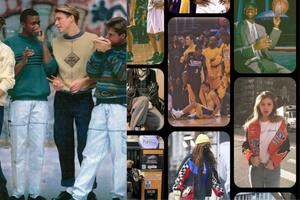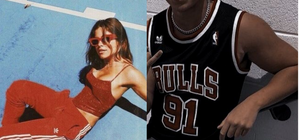The Complete Guide for Vintage Clothing in 2022
Nowadays, wearing vintage clothing has become a viral trend. But do we know what “Vintage” means and what kind of clothing counts as vintage?
In this blog, you’ll glimpse the word's history, meaning and a vintage clothing guide.
What Is Vintage Clothing?
If you’re interested in buying vintage clothing, it’s good to know its information. You may have heard about the term but never really understood which clothes count as real vintage? That happens because the word gets misused very often. Retro garments, for instance, are not vintage because these are new clothes with a retro redesign look. What is also often misunderstood is that second-hand clothing correlates with vintage clothing. Indeed, there are also modern second-hand clothes that aren’t vintage.
How Old Is Vintage Clothing?
Now we concentrated on clothes that do not count as vintage, but what does?
Vintage clothes are at least one generation old. That means it is about 20 years or even older – nowadays the trends lies in the last decades 70s to the 90s. We primarily understand “Top Vintage” as products manufactured before the 1990s. So, for instance, top vintage dresses are more expensive than modern ones.
The History of Vintage Clothing
Every clothing is different from era to era – the 70s were famous for their bright colored clothing, while the 80s also had their popular vintage items like the denim look. Celebrities also made the trend more relevant than it usually would. Till now, the style icon Brigitte Bardot inspired a lot of women with her look in the 60s. She manages to make wearing dresses and suits look elegant and casual at once. Her style is an excellent guide for women’s vintage clothing outfit ideas. Rob Lowe was also a style icon in the 80s and significantly impacted men’s vintage clothing inspiration. His most popular clothing pieces are leather and college jackets which were the IT pieces in the 80s era.
The 50s, in fact, were known for their dresses which were worn daily. In the 60s, suits became more popular amongst women again—flared Jeans, on the other hand, in the 70s.
These are glimpses of the style changes through the decades, which are important indicators of the history of vintage clothing. Many young people get their inspiration from them and tend to buy more vintage clothing due to that.
For example, Vintage Rapper and Band T-Shirts inspired by the 80s and 90s are more searched since they became scarce and popular.
How to Tell if Something is True Vintage?
Now we know what the term “Vintage” means and how old the apparel must be, but how do we notice that a clothing piece is actually true vintage? Often the most revealing part of an apparel is the vintage clothing labels. The true vintage labels are mostly not printed like the modern clothing tags but they do have a thick material. There are also modern clothes with fabric tags, but they differ in texture. The modern ones have a thinner fabric in contrast to vintage tags.
The labels differ from the fabric and the clothing itself: for instance, vintage T-Shirts are also usually thicker. The fact is that cotton – which is often used for T-Shirts – was 100% cotton before, and now it is often combined with polyester. The reason behind it is to minimize the manufacturing costs.
Another essential aspect to differentiate true vintage from modern clothes is where the product was manufactured. The costs are also playing a significant role in the changes, that’s why the clothing was usually made in the USA or Mexico decades ago. You’ll see it more often in China, the Philippines, or Nicaragua. In vintage clothing stores, the clothes made in USA or Mexico are pretty more expensive than the others.
Vintage vs. Retro Clothing: How to Differentiate
As we said before, retro clothes are vintage-style clothing that is new. Nowadays, fast fashion industries manufacture more and more retro clothes because the hype about vintage is getting bigger. They also give young people – especially generation Z – vintage outfit ideas to get inspired to buy their retro clothes since it’s hard to find their unique style in this day and age.
As mentioned before, retro clothes could have more poor materials than real vintage clothes, so it can also be an aspect to differentiate both clothing categories. But it is not a 100% reliable aspect because even real vintage clothes could have a lighter fabric and texture. You can compare retro clothes to modern ones; the only difference is the style – trendy clothing is way less of an eye-catcher than retro clothes because primarily, products that are considered retro have their style inspiration from the 50s to 80s. That means the typical 50s dresses or 70s padded Blazers are usually retro, while Sportswear Clothing like Sweatshirts or Hoodies is a part of the new modern look.
The Do’s And Don'ts of Wearing Vintage
Since vintage pieces are already an eye-catcher themselves, combining them is not easy. Usually, it will start with color-blocking, which happens quite more often unintentionally than we think.
So, the best way to wear vintage apparel is to combine a noticeable vintage T-Shirt with a Levi’s Jeans, for instance. Or, if you’re wearing a vintage floral dress, add some decent accessories to underline the look. Of course, it is also a good outfit idea if you’re comfortable with wearing layers!
As an example, the typical 90’s – a cool university sweatshirt with a white blouse underneath.
If you want to avoid looking too customey like you just came from a 70s disco party, avoid wearing too much color or glittery clothes for an average day. Big Shoulder Pads on Blazers are also considered too much nowadays, so try finding a good vintage blazer with a decent look and combine it in your unique way!
Always consider the correct sizing – sometimes it is very tricky to buy vintage second-hand clothes because the sizing could be distorted from the washing. Therefore, it is best to try on the clothes first before buying.
One of the most important aspects of wearing vintage is to feel comfortable! So wear what you want and not only because the media says it’s the new trend and you will look thousands of times more attractive when you wear that one specific thing – it’s wrong.
When you feel uncomfortable in an outfit, you’ll mostly radiate the discomfort, which will make you think and seem insecure.
The happier and more comfortable you are with yourself, the better. So, buy the clothes you want to buy and wear.
What Makes a Shirt Vintage?
Here’s a quick guide for vintage T-Shirts and how to find them.
Several stores sell second-hand clothing; choose the best vintage clothing websites to your liking, and browse their clothing sections. To discover true vintage pieces, it is best to focus on the imprint of the T-Shirt. The product is more valuable if the imprint is stitched and not printed. Another aspect of a vintage T-Shirt is the stitching technique on the sleeve. If you see one stitch, the product was manufactured before 1994! Therefore, you can see if the product is true vintage or not.
A few designers use the old technique too nowadays, but it is also just a tiny amount.
As I already mentioned, the tag or label is an important point to differentiate vintage clothes from modern ones. Unfortunately, you can’t see the tags on the online shopping pictures, but it’s a good thing to look out for if you're thrift shopping.
You also must consider that vintage clothing often has stains or holes in them. It is infrequent to find good vintage pieces without any blemish – and if you see something, it is usually more expensive due to the rareness. So don’t freak out if the product has any blemishes, it is easy to wash it out, or you could let the holes be sewed for only 3-5€.
Does Vintage Mean Authentic?
“Of age” is the meaning behind the word vintage, which means vintage clothes are authentic. Unauthentic clothes are good imitations but don’t consider as original or genuine.
Nevertheless, the “Vintage” term is often misused, where unauthentic clothes get the label and are usually not checked. However, with the techniques of seeing if something’s authentic or not, you can check it out immediately. It is pretty straightforward with the newly earned knowledge!
Retro clothing could not be seen as unauthentic because it is not defined as true vintage. If sellers claim their retro clothing is vintage, though, then it’s a false statement that is considered as unauthentic.
Are All Vintage Clothes Second-Hand?
The short answer is no!
There are only a rare number of items that were not second-hand due to their age. It is also challenging to search directly for vintage clothing that wasn’t already worn because there’s no particular category. But nothing is impossible! An excellent indicator for new vintage clothing is when the tag is still on it.
A few vintage Online Shops or stores sell vintage clothing with the original tag. As you can imagine, no one would wear a shirt regularly with a hefty tag on the front. So, you could see it as new, or someone tried it on and decided not to wear it.
Nevertheless, if you want to wear vintage clothes which aren’t second-hand, you can adjust to the fact that you won’t get much out of them. There’s nothing wrong with wearing second-hand – you could see it as a clothing piece that was tried on a few times. Since you already must wash new non-worn clothes, it is the same with second-hand.
Now we discussed if vintage fashion is always second-hand but is second-hand always vintage?
The answer is the same – no! Many stores also sell modern clothing, which is often a lot cheaper. It is a good routine for buying new fashion clothing that is environmentally friendly since fast fashion production is getting way too non-sustainable.
Why is Vintage so Popular Now?
A few years ago, second-hand was a term that generation Z didn’t know. But suddenly it is known by a lot more people now. How did vintage become so popular this fast?
There are a few hypotheses how it became more known and liked –
- The first one is that this generation seeks uniqueness and fairness. Before the vintage second-hand scene became popular, the beauty standards were very narrow-lined: super skinny and tall. Not many people conform to the ideal beauty – since it’s not that usual - and it causes discomfort. That was one of the significant indicators of why the change was essential.
- There are more ways to express oneself with different styles from the 70s to the 90s. For instance, if you’re a person who loves colors and funky clothes, the 2010 looks wouldn’t suit you like the 70s or the 2000s.
- It is not a secret that second-hand is the more environmentally friendly way to buy fashion clothing. Since global warming became a big problem and after Greta Thunberg stood behind the environment, more people became more attentive to how to help the circumstances. That was one of the many reasons vintage and second-hand clothing became popular after time, and generation Z was extra aware of it.
- Vintage clothes last longer than fast fashion. Let me demonstrate: fast fashion clothes are known for their low-priced garments, but the most significant disadvantage is that the clothes get worn off way faster, so there’s always a quick change from clothing to clothing. On the other hand, vintage clothes are more long-lasting, and since it doesn’t correspond to trends, they can be worn anytime without wearing something that is “so last year.”
- Celebrities wearing vintage also changed the whole game of fashion. Stars were always style icons and inspiration for every kind of person since they’re someone we look up to. So, after they wore vintage more and more, the trend got hyped up.
What’s the Difference Between Vintage and Old?
Vintage can and cannot be considered old. It depends on what you mean by it.
We know that Vintage Clothing is at least one decade old, so it's considered as “old.” But we usually understand the term as outworn and out of date. In that case, the word doesn’t fit at all. Antique Clothes, on the other hand, are rather old. So, when vintage is decades old and retro is new, what is considered antique?
Antique clothes are 100 years and older. It is tough to find real antique clothes nowadays, so usually, they can be found by family members who kept the clothing from their ancestors. However, finding antique jewelry or furniture/decoration is more accessible because they’re collectibles with a high worth and get sold for a high price.
This vintage clothing guide should help you buy vintage clothing with more awareness and differentiate the terms to have more knowledge on what you’re searching for individually. It also may help you realize what you’re looking for primarily.
I am sure that the vintage trend won’t be a short one like the other trends since it is a big plate consisting of different styles and looks through the decades. It had a big come-back after the 90s, and it was already a huge thing– the 70s look was trendy, and the vintage stores had their peak back then.
Vintage Clothing has a lot of advantages, and the disadvantages are pretty tricky to find. The only drawback I see is that second-hand clothes are sometimes quite high-priced because they have been worn already. But since you’re buying something that could count as a collectible or is super rare, it is worth it, especially after knowing that it’s long-lasting and has outstanding quality. It equals ten fast fashion shirts, and you’ll spend less money long-term when you buy vintage clothing.
These clothes are usually found in second-hand stores, online shops, thrift stores, and flea markets. There are also platforms, especially from private people who sell their clothes - but you need to know that it’s also mixed with modern ones, so use your new earned knowledge to differentiate!
I hope you can get a good insight, and I wish you success for conscious future purchases.
Not only you’ll get personal benefits but also the environment!

Meet The Author
Dan Shewan
Originally from the U.K., Dan Shewan is a journalist and web content specialist who now lives and writes in New England. Dan’s work has appeared in a wide range of publications in print and online, including The Guardian, The Daily Beast, Pacific Standard magazine, The Independent, McSweeney’s Internet Tendency, and many other outlets.
See other posts by Dan Shewan
Sign up for our weekly newsletter!
Related Articles

The Benefits of Buying Vintage Clothing Online: and why it's worth it

Holiday Fashion Wishlist

How to Find Your Vintage Style

